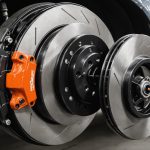Understanding Automatic Emergency Braking Systems
Automatic Emergency Braking (AEB) technology is a pivotal driver-assistance feature designed to enhance vehicle safety by reducing collisions. AEB systems utilize a combination of sensors, cameras, and radar to monitor the road ahead continuously. The system autonomously applies brakes when it detects the potential for an imminent collision, either slowing down or stopping the vehicle completely.
The significance of AEB technology in augmenting vehicular safety cannot be overstated. By intervening independently, AEB systems act as a crucial safeguard, especially when drivers fail to react swiftly enough in emergency situations. This technology not only lowers the risk of rear-end collisions but also significantly mitigates the severity of accidents when they occur.
Also to read : Must-know safety guidelines for cars featuring panoramic sunroofs: protect yourself and your passengers
When compared to other modern vehicle safety features, AEB stands out due to its proactive prevention capabilities. While features like lane-keeping assist and blind-spot monitoring provide valuable real-time feedback and warnings to drivers, AEB goes a step further by taking direct action to avoid potential crashes. Its integration is becoming increasingly common in newer vehicle models, reinforcing its role as a cornerstone in the evolution of automotive safety systems.
Benefits of Enhancing the AEB System
Enhancing AEB benefits starts with significantly reducing collision risks. The ability of Automatic Emergency Braking systems to autonomously apply brakes in urgent situations minimizes accidents’ likelihood and severity. Enhanced AEB features have shown substantial safety improvements across various vehicle models. According to real-world performance metrics, vehicles equipped with AEB demonstrate a noticeable decline in rear-end collision rates.
Also to see : Vital safety guidelines for enhancing your ride with a digital dashboard upgrade
Safety improvements extend to increased driver confidence and an overall positive driving experience. Knowing that an additional layer of safety operates in the background allows drivers to focus better on the road. These systems not only protect against accidents but also offer a buffer against common driving distractions.
The continuous evolution of AEB technology plays a crucial role in accident prevention. Enhancements that include more sophisticated sensor technology and improved algorithms ensure a reliable response during emergencies. These advances help maintain the consistency and effectiveness of automatic emergency braking, offering peace of mind to drivers and passengers alike. As integration becomes more widespread, understanding the full scope of AEB benefits empowers drivers to embrace innovation in vehicle safety features.
Common Issues with Automatic Emergency Braking Systems
It’s crucial to acknowledge typical AEB problems and troubleshoot them to maintain optimal functionality. One major indicator of malfunctioning emergency braking is unexpected brake activations without imminent threats. This can be unsettling, potentially leading to unwarranted braking in normal conditions. If drivers notice these signs, it’s advisable to consult the vehicle’s manual or a professional.
Environmental factors can significantly impact AEB performance. Weather conditions like rain or snow may obstruct sensors, leading to missed detections or false triggers. Similarly, dirt or debris on sensors can cause errors, highlighting the need for regular cleaning.
For troubleshooting AEB issues, start by checking sensor cleanliness and alignment. If problems persist, engaging a professional for deeper diagnostics is wise. Understanding how AEB technology interacts with environmental variables can guide drivers in addressing issues effectively.
Simple maintenance, like clearing the sensor areas, can mitigate some common AEB problems. However, recognising the boundaries of self-troubleshooting is vital. When in doubt, professional assessment ensures that the AEB system operates as intended, thus maintaining safety and efficiency on the road.
Calibration Methods for Optimal AEB Performance
Ensuring optimal AEB performance necessitates proper calibration. AEB calibration aligns sensors and adjusts AEB settings to maintain precision in detecting potential hazards.
Overview of Calibration Needs
Calibration is crucial for the accuracy and reliability of vehicle safety features like AEB, which rely on precise sensor data to function effectively. Misalignment may lead to false activations or failures in recognizing actual threats.
Calibration Procedures
For vehicle owners, initial calibration involves checking the sensor alignment and ensuring no obstructions. Some manufacturers provide software updates or in-dashboard settings allowing for re-calibration. Following the user manual ensures the procedure is tailored to your vehicle.
Professional vs. DIY Calibration
While some calibration steps can be done independently, professional help is recommended when precision can’t be achieved through DIY methods. Professionals have the tools and expertise to adjust AEB settings accurately, ensuring all components function harmoniously. Regular professional assessments can preemptively correct potential misalignments, maintaining the integrity of AEB systems. Opting for a professional approach, especially when the system exhibits malfunctions, can safeguard against future issues and preserve the effectiveness of automatic emergency braking technology.
Maintenance Tips for AEB Systems
Proper AEB maintenance ensures that this vital car safety feature functions optimally, reducing the likelihood of unforeseen issues. Routine checks and inspections are key for maintaining effective brake system care.
Start with regular inspections of sensors for cleanliness and alignment. Dust, dirt, or debris can significantly impair the function of automatic emergency braking by hindering sensor performance. Keep these areas unobstructed to allow sensors to accurately detect potential hazards.
Safety upkeep involves setting recommended service intervals, especially for vehicles frequently driven in harsh conditions. Professional assessments are advised at least annually or more frequently if performance concerns arise. These evaluations can uncover issues not apparent through routine checks.
More advanced brake system care may require professional attention, such as when sensor malfunctions or erroneous activations persist. Addressing these issues early with a qualified technician can prevent further complications.
Incorporating AEB maintenance into regular vehicle care promotes long-term reliability and safety. Understanding and applying these maintenance tips not only reinforces the overall safety framework of a vehicle but also reassures drivers of dependable AEB performance. With diligent AEB care, drivers can confidently rely on these cutting-edge technologies to enhance their driving experience.
Best Practices for Maximizing AEB Effectiveness
To fully benefit from AEB technology, aligning safe driving habits with its functionality enhances vehicle safety features. Practicing AEB best practices involves maintaining a consistent focus on the road, even with automated features. While AEB technology reduces collision risks, the driver remains integral in recognizing situations that the system may not detect.
Prioritizing situational awareness is crucial. This means continuously observing the driving environment, like assessing road conditions and predicting the actions of other drivers. Such awareness significantly complements emergency braking tips, boosting the effectiveness of Automatic Emergency Braking. Familiarity with your vehicle’s specific AEB capabilities is equally important, as this knowledge allows drivers to utilize the system more efficiently and confidently.
Here are some recommended practices:
- Keep a safe following distance: AEB systems are more effective when there’s ample space between vehicles.
- Regularly update and calibrate systems: Ensures that the system operates with the latest technology advancements.
- Participate in driver education programs: These programs can increase understanding of AEB functionalities, ensuring drivers are adequately informed about their AEB systems.
Engaging with these practices empowers drivers to maximize safety while utilizing these advanced technologies.
Frequently Asked Questions About AEB Systems
Understanding Automatic Emergency Braking (AEB) systems can stir questions among consumers, especially concerning its capabilities and limitations. Let’s address some common questions.
What are the main capabilities of AEB systems? AEB technology detects potential collisions and autonomously applies brakes to prevent accidents or reduce their severity. It uses sensors and cameras to assess the road continuously, providing prompt response when immediate interactions are needed.
Are there misconceptions about AEB’s effectiveness? Indeed, some drivers mistakenly believe AEB replaces attentive driving. While AEB systems enhance vehicle safety features, they do not substitute the driver’s awareness and decision-making skills.
How does AEB affect vehicle warranties? Including AEB technology in vehicles usually does not alter standard warranty terms. However, it’s wise to read the warranty details provided by the vehicle manufacturer to understand any specific conditions related to AEB functionality.
What about liability in AEB-related accidents? Liability in accidents involving automatic emergency braking can vary based on jurisdiction and accident specifics. Generally, responsibility still lies with the driver, emphasizing the technology’s supportive, rather than replacement, role in maintaining safety. Engaging with further reading and resources can provide a deeper comprehension of these topics.











